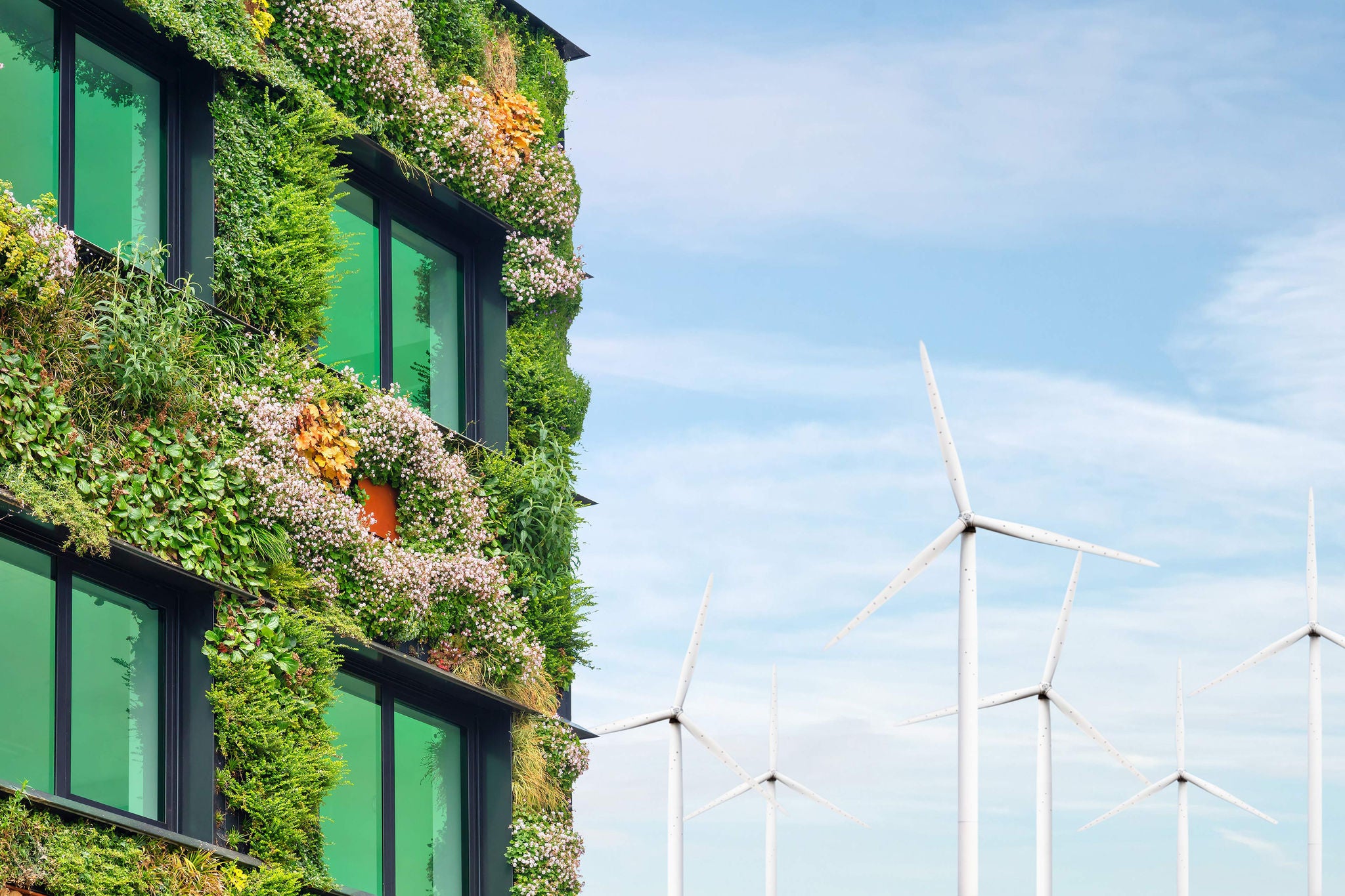Climate is a key driver to apply new technologies within engineering and construction
Technology is enabling climate-friendly solutions from the initial phases of building to ensuring energy efficiency. Sustainable design will be critical as construction companies try to reduce their energy consumption in completed buildings. The construction industry must implement sustainable design, engineering and construction practices driven by applicable data to track, measure and reduce emissions and waste throughout the project lifecycle. Smart building sensors, 3D printing and energy-efficient building materials create lasting and positive outcomes for the environment.
As ConTech has become an important arm of building sustainability, it has proven more resilient to economic head winds than other innovation-oriented segments. While FinTech and property technology (PropTech) recorded sharp annual declines of capital flows (30% and 38%, respectively), investment in ConTech dropped by only 1%, reaching $5.68 billion in 2022⁴. Globally, the US was the most active country, with 97 startups attracting 42.5% of all ConTech capital, which is over four times the amount of investment in the next most active country — the United Kingdom, with 20 startups and 8.8% of the funding.
Advanced and green construction materials are supporting the ESG agenda
Green and advanced construction materials contribute higher efficiency, recyclability and durability of performance, which, in the long run, bring more benefits than the up-front capital outlays. Sustainable design will be critical as construction companies try to reduce their energy consumption in completed buildings. Engineering and construction leaders face competing pressures as they try to control costs while focusing on reducing the carbon footprint, but using energy-intensive heavy equipment to develop structures that are scalable, taller, greener, healthier and more technologically advanced than ever before.
New sustainable materials can help reduce the amount of embodied carbon a building contains. Embodied carbon refers to the greenhouse gas emissions associated with the construction process, including the production, logistics and installation of building materials. Embodied carbon contributes about 11% of the total 40% of greenhouse gas emissions that buildings contribute worldwide⁵. Many tactics can be used to help reduce the amount of embodied carbon within a construction project. One way is to reduce the amount of materials used in construction by designing buildings that are more efficient and require fewer materials.
Another way is to use low-carbon materials such as timber, bamboo and recycled steel. New construction materials have been developed and existing ones upgraded to pave their way to reduce carbon emissions and boost energy efficiency. Some examples of green construction materials include carbon fiber. Though it is costly, it is 75% lighter than iron and 30% lighter than aluminum. Additionally, using prefabricated building components can reduce the amount of waste generated during construction and lower the carbon footprint of the building. It is used to reinforce traditional building and reduce the thickness of panels and lower their weight. Once it is added into concrete, it provides excellent thermal insulation. Construction companies are also using cross-laminated timber (CLT), which is bonded in layers, manufactured off-site and assembled on-site. CLT is strong, lightweight and is extremely fire-resistant.
The construction industry itself is prone to the effects of climate change
There is added motivation for engineering and construction companies to use sustainable practices as the results of climate change directly impact the bottom line. With an increasing number of extreme weather events, damage and insurance costs are rising. Gradual climate change, including temperatures, wind conditions and rising sea levels, as well as extreme weather events such as floods, fires and droughts, all affect construction. These impacts include faster degradation of construction materials, like corrosion of metals and shorter life spans of wooden buildings, leading to structural damage. Water damage and leaks can lead to mold growth, and a sudden shift in energy use can increase HVAC usage and cause higher operational costs.
To mitigate these risks, the industry must apply climate-resilient solutions, including building codes that support sustainable construction and address risks connected with climate change. Construction companies need to provide appropriate health and safety conditions for workers at the site, including preparedness for extreme weather events and natural disasters. Using climate-resilient design and materials and solutions suitable to mitigate the impacts of climate change is a must for a more sustainable future.
If you would like the complete study, please contact Erin Roberts.






